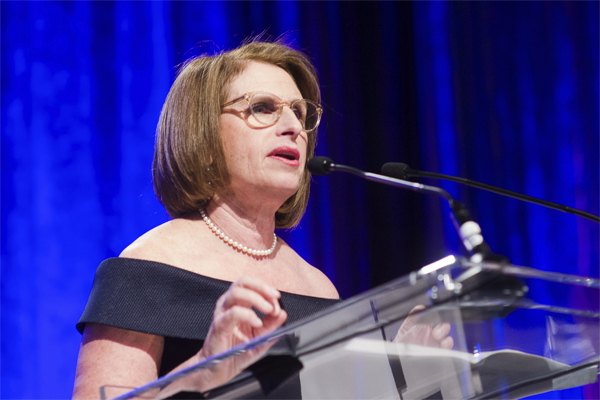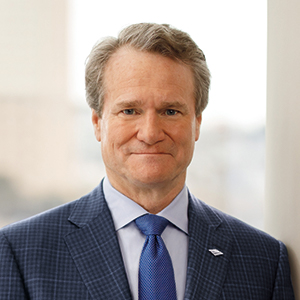As well as helping companies to advance women in leadership, Catalyst is also urging more CEOs to address racial inequalities at work.
“Women, and particularly women of colour, continue to face entrenched barriers to advancement in companies across the world,” pointed out Catalyst’s President & CEO Lorraine Hariton. “It’s important that Catalyst CEO Champions For Change companies continue to demonstrate collective progress.”
The non-profit’s latest report Towards a More Equitable Future: The Catalyst CEO Champions For Change, reveals that in 2019, its Champion company members outpaced their global peers in advancing women at every level – from managers to board members. In fact, women of Champion company members held 31.6% of board seats, compared to just 26% of board seats at S&P 500 companies. Yet, despite these positive gains, Hariton believes that companies need to do more to address racial inequalities in the workplace as they are still holding women of colour back from reaching their full potential.
ROADMAP TO ADDRESS RACIAL INEQUALTIES
Racism and unconscious and conscious bias exist even in the best organisations; and it takes sustained, intentional effort to eradicate these longstanding cultural norms and policies. But there’s “never been a better time to start”, according to Hariton. Its latest report also provides a roadmap of how organisations can address racial inequalities in the workplace.

Catalyst’s report explores ways to measure the representation of women who identify with underrepresented ethnic and racial groups; and it provides a three-step plan to help organisations accelerate their journey toward equity. They include:
- Getting educated on intersectionality.
- Establishing a system for collecting reliable data on race and ethnicity.
- Starting the conversation about racism.
GET EDUCATED ON INTERSECTIONALITY
Women identifying with underrepresented ethnic and racial groups face unique challenges that White women do not. For example, women identifying with underrepresented ethnic and racial groups often endure daily microaggressions – verbal and nonverbal slights, insults, and snubs. Being singled out or excluded, whether or not it’s intentional, takes a toll on them both personally and professionally.
At work, these women are “on guard,” always waiting and preparing for the next act of bias or discrimination. This leads to sleep problems, a loss of productivity, and an increase in their intent to leave the company. In short, they face discrimination on multiple fronts – from their gender, race, and ethnicity – which is why companies must view all diversity and inclusion initiatives with an intersectional lens, points out Catalyst.

COLLECT RELIABLE RACE & ETHNICITY DATA
Establishing a baseline of the current racial and ethnic diversity at your organisation is a critical step toward positive progress. Outside of North America, gathering consistent and accurate data on race and ethnicity can be challenging. Catalyst provides the following tips to help collect reliable data:
- Conduct a legal audit of the countries represented in your workforce to determine the specific rules and guidelines around demographic data collection.
- Explore leading-edge practices in data collection from national/state agencies, universities, research organisations, think tanks, NGOs and professional services firms.
- Consult data collection resources like the European Handbook on Equality Data.
- Consider alternatives to ethnicity and race, such as nationality, country of origin, place of birth, migrant status, or citizenship. These categories might be more feasible in the cultural and legal contexts of some countries. When developing alternatives, be sure to consider dimensions of identity and diversity unique to each country where your company operates.
- Develop a communications plan. Include underrepresented communities in conversations about data collection and self- identification. Conduct a pulse survey to gauge fears, concerns, and barriers associated with data collection. Convey the importance of this data to your organization as clearly as possible, including details on how it will be used, who sees it, and how privacy will be ensured.
HAVE THOSE ‘RACISM’ CONVERSATIONS
To identify barriers and develop programs aimed at positive change, it’s vital to start the conversation. “It will be uncomfortable, but it’s a necessary step for progress,” notes Catalyst. To assist in navigating these conversations, Catalyst has developed some ground rules for having constructive discussions about gender, race, and ethnicity. They include:
- Assume positive intent.
- Engage in dialogue, not debate.
- Hold yourself and others accountable for demonstrating cultural humility.
- Be open, transparent, and willing to admit mistakes.
- Embrace the power of humble listening.
- Create trusting and safe spaces, where a little bit of discomfort is okay.
- Commit to having conversations that matter by speaking up to bridge divides.
CEO CHAMPIONS LEADING THE WAY
Catalyst CEO Champions For Change, representing more than 70 high-profile CEOs, have been engaged in this effort, long before 2020, confirmed the non-profit. And they continue to lead the way towards creating more inclusive workplaces. These leaders have boldly pledged to advance more women, particularly women of colour, into senior leadership positions.
One of those Champion CEOs is Brian Moynihan, CEO at Bank of America. “Across all levels of our company, we’re committed to increasing the representation and visibility of diverse talent, and our partnership with the Catalyst CEO Champions For Change will help us to accelerate that progress,” commented Moynihan. “We have also built on work we have had underway throughout our company’s history to ensure a diverse and inclusive workplace and have seen increases in diverse representation in nearly every area.”

GENPACT’S DIVERSITY COMMITMENT
“Tiger” Tyagarajan, Chief Executive Officer of Genpact, a global professional services firm focused on digital transformation, is also one Catalysts Champion CEOs that has also confirmed his “deepening commitment” to diversity, equity and inclusion (DE&I). “It is the cornerstone of Genpact’s culture, and essential to how we acquire, retain, and nurture the best talent around the world. We’re proud of our momentum, which includes 22% women in our senior leadership ranks today, up from 7% in 2013. People are our greatest asset, and we have always believed that the perspectives, experiences, and opinions that come from a diverse workforce are key to our success,” explained Tyagarajan. “It remains a business imperative to promote an environment where women excel and advance to leadership roles.”

Genpact’s DE&I commitment includes a broad range of ongoing programmes, as well as new initiatives in the past year. The company launched its Women’s Leadership Programme, back in 2019. It is aimed at women leaders at the assistant vice president level to develop core leadership behaviours and skillsets, enhance leadership impact and influence globally and identify candidates to fast-track for career advancement.
Genpact also confirmed that it is also is looking at leadership development specifically through a racial equity lens to identify high-potential Black and Latinx employees for its leadership programmes and introducing new targeted mentorship and sponsorships initiatives.







































